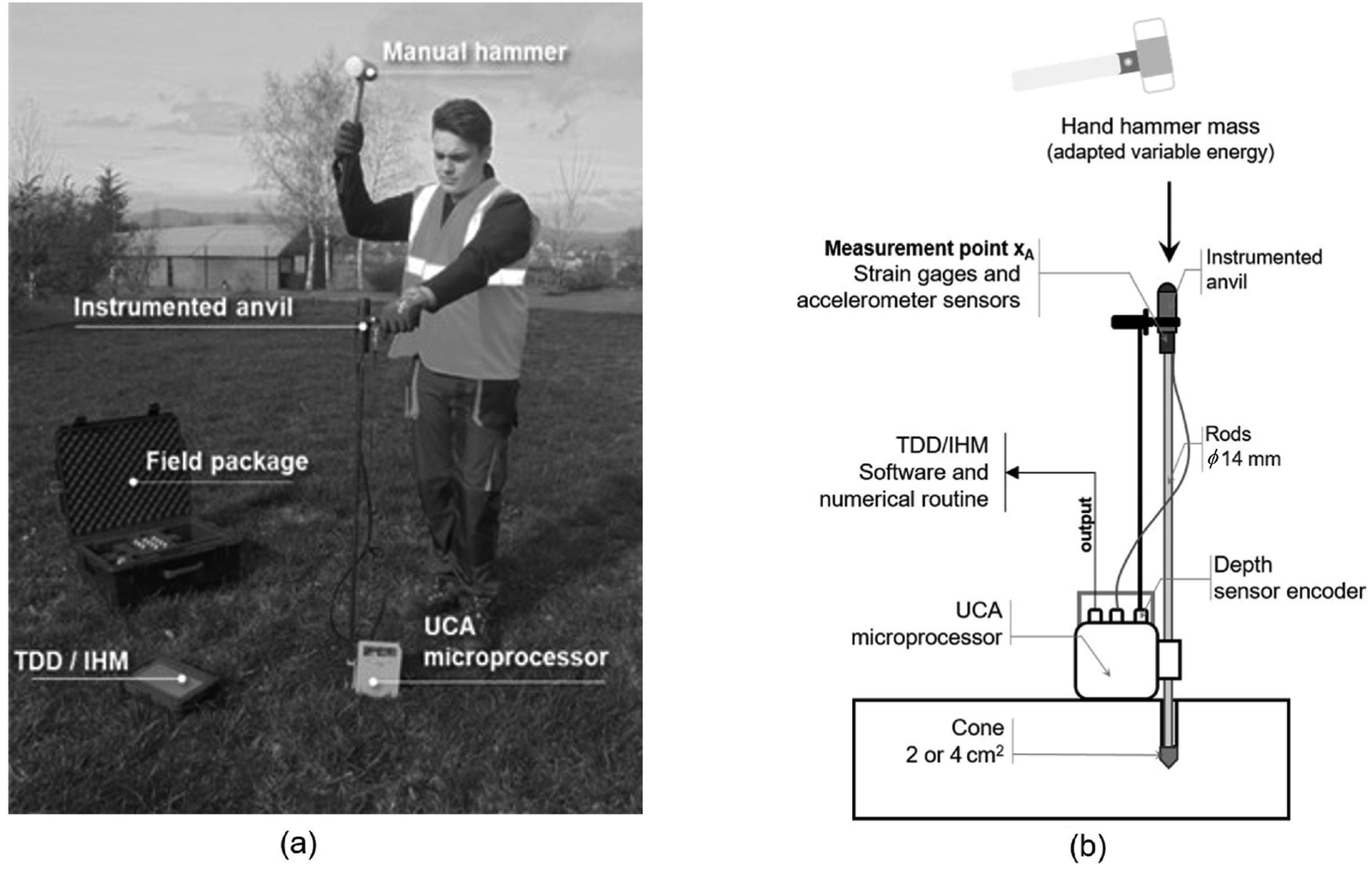JRMGE / Vol 14 / Issue 1
Application of wave equation theory to improve dynamic cone penetration test for shallow soil characterisation
Miguel Angel Benz Navarrete, Pierre Breul, Roland Gourvès
Show More
a Sol Solution Géotechnique Réseaux, ZA des Portes de Riom Nord, 23 Avenue Georges Gershwin, Riom Cedex, 63204, France
b Université Clermont Auvergne, Institut Pascal, UMR CNRS 6602, Clermont-Ferrand, 63000, France
c Polytech Clermont-Ferrand Campus des Cézeaux, 2 Avenue Blaise Pascal, Aubière Cedex, 63178, France
2022, 14(1): 289-302. doi:10.1016/j.jrmge.2021.07.004
Received: 2020-08-27 / Revised: 2021-05-24 / Accepted: 2021-07-17 / Available online: 2021-09-07
2022, 14(1): 289-302.
doi:10.1016/j.jrmge.2021.07.004
Received: 2020-08-27
Revised: 2021-05-24
Accepted: 2021-07-17
Available online: 2021-09-07
Among the geotechnical in situ tests, the dynamic penetration test (DPT) is commonly used around the world. However, DPT remains a rough technique and provides only one failure parameter: blow count or cone resistance. This paper presents an improvement of the dynamic cone penetration test (DCPT) for soil characterisation based on the wave equation theory. Implemented on an instrumented lightweight dynamic penetrometer driving with variable energy, the main process of the test involves the separation and reconstruction of the waves propagating in the rods after each blow and provides a dynamic cone load-penetration (DCLT) curve. An analytical methodology is used to analyse this curve and to estimate additional strength and deformation parameters of the soil: dynamic and pseudo-static cone resistances, deformation modulus and wave velocity. Tests carried out in the laboratory on different specimens (wood, concrete, sand and clay) in an experimental sand pit and in the field demonstrated that the resulting DCLT curve is reproducible, sensitive and reliable to the test conditions (rod length, driving energy, etc.) as well as to the soil properties (nature, density, etc.). Obtained results also showed that the method based on shock polar analysis makes it possible to evaluate mechanical impedance and wave velocity of soils, as demonstrated by the comparisons with cone penetration test (CPT) and shear wave velocity measurements made in the field. This technique improves the method and interpretation of DPT and provides reliable data for shallow foundation design.
Keywords: In situ test, Dynamic cone penetrometer, P.A.N.D.A., Wave equation, Wave decoupling, Dynamic cone load-penetration (DCLT) curve
Article Data
Author(s) Information
Miguel Angel Benz Navarrete

Miguel Angel Benz Navarrete obtained his BSc degree in Construction Engineering from Pontifical Catholic University of Valparaíso (PUCV), Chile, in 2004, and his MSc and PhD degrees in Materials, Structures, Reliability in Civil and Mechanical Engineering from Clermont Auvergne University, Clermont Ferrand, France, in 2005 and 2009, respectively. Since 2005, he has been affiliated as a research engineer with the scientific research and technical development department of Sol Solution SAS, a geotechnical consulting company based in Riom, France. He is currently in charge of innovation, research and development department as well as technical advisor at Sol Solution company, whose main mission is to design and develop innovative solutions in the field of in situ soil characterisation, earthworks compaction control, geotechnical and geophysical surveys, and high-yield diagnostics of transport structures with low impact on soil-structure interaction. His main skills and research interests include in situ geotechnical and geophysical tests, dynamic penetrometer improvement, pile driving and stress wave theory, borehole image analysis, numerical modeling (DEM/FEM), instrumentation, signal processing and data analysis as well as development of software and in situ test databases for soil interpretation, processing, spatialization and field modeling. He has co-directed 4 PhD theses to completion and at least 30 Eng/MSc/PhD internship students in their final research dissertations with the company and different national and international universities.

